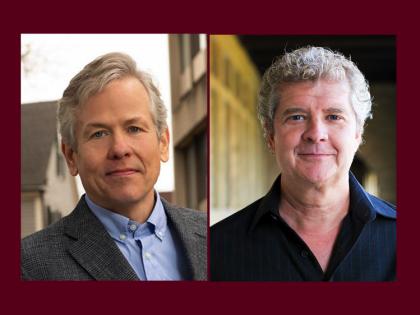The already torrid pace of construction around campus is about to intensify. The renovation and expansion of Winthrop House, the largest undergraduate-residence “renewal” to date, will surge toward completion in August—and the even larger Lowell House makeover, itself a two-year project, is scheduled to begin promptly after Commencement. The Business School’s Klarman Hall conference center is well under way, as is renovation of the adjacent Soldiers Field Park apartment complex. Just across Western Avenue from that campus, below-grade construction for the $1-billion science and engineeering complex has proceeded for months; come May, steel is expected on site for the visible superstructure (pointing toward a 2020 opening). And Harvard Kennedy School continues to remake virtually its entire campus from the inside out.
Alongside those projects and other, lesser ones—in all, $2 billion of capital investments, give or take—still more construction is on tap. Harvard Planning Office’s “Town Gown Report” to Cambridge identifies multiple pending projects, including three major ones:
- The Law School has secured zoning approval for a new, 21,000-square-foot building at 1607-1615 Massachusetts Ave., replacing vacant one-story storefronts at the corner of Everett Street, to house public-service clinical programs; construction is planned late this year.
- The University is preparing to renovate the Arthur M. Sackler Building, whose collections have been consolidated at the renovated Harvard Art Museums (HAM), freeing its extensive galleries for other uses. Among them will be programmatic space for the history of art and architecture department, the main tenant already based there; the Arts@29 undergraduate art-making center (relocating from Garden Street to within a block of the Carpenter Center, home to the principal studios); and the Graduate School of Design, which is landlocked and still planning its own on-site expansion. Construction is expected this year. (Not involved is relocation of the fine arts library, which was moved from Werner Otto Hall before it was razed to make way for the HAM project. The library continues to reside in semi-exile from the art historians, in the basement of Littauer Center, near the Law School. At some point, Littauer itself will be reconfigured to better suit the evolving needs of the huge economics department, the major occupant—but it is not known when that work will advance.)
- And in the dreary-but-essential category, the Faculty of Arts and Sciences also plans to replace the entire heating, ventilation, air conditioning, and exhaust system for its huge Biological Laboratories complex.
Thus, University building budgets remain intact, even as pressure on schools’ operating budgets becomes evident (see “Graduate Admissions in Lower Gear”).







